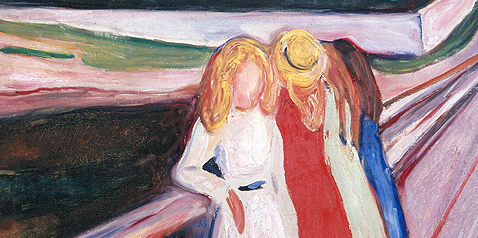
EDVARD MUNCH
Born on 12 December 1863 in Løten in the Norwegian province of Hedmark, Munch first embarked on an architectural course before deciding in 1881 to attend the school of drawing. Introduced to naturalistic open-air painting by Christian Krohg and Frits Thaulow, he was, from the middle of the decade, increasingly influenced by the circle of the writer Hans Jæger, who in his works attached great importance to subjectivity and self-observation. This strengthened Munch in his endeavours to orient the content of his pictures to his own, deeply pessimistic world view, which, since his childhood, had been characterized by fears and anxieties of many kinds. In order to underscore the emotions that speak from his works, and to give his painting an ever stronger symbolic content, Munch filled his pictures with expressively concentrated metaphors. Thus, in his pictorial world, expression is given to the constant feeling of threat from death and disease, and no less is the beholder confronted time and again with motifs whose sexual undertone is unmistakable – a pointer to the artist’s problematic relationship with women.
From 1885, Munch paid a number of visits to Paris, where he absorbed inspirations from contemporary French art. Inspired by artists such as Paul Gauguin, Henri de Toulouse-Lautrec and Vincent van Gogh, he further developed his symbolistic and expressive style of painting.
Following a nervous breakdown in the autumn of 1908 and subsequent treatment in a psychiatric clinic in Copenhagen, the artist withdrew to his property in Ekely, outside Oslo. However his works were honoured by his being given a room of their own at the Sonderbund Exhibition in Cologne in 1912 – a distinction accorded to no other living artist apart from Picasso and Signac. In 1937 the Nazis classified his art as ‘degenerate’, and a total of 82 of his works were confiscated. Also, an eye disease in 1930 had temporarily prevented him from painting. Munch died on 23 January 1944 at his home in Ekely. As the pioneer of Expressionism, this Norwegian painter also, and especially, influenced German art.


